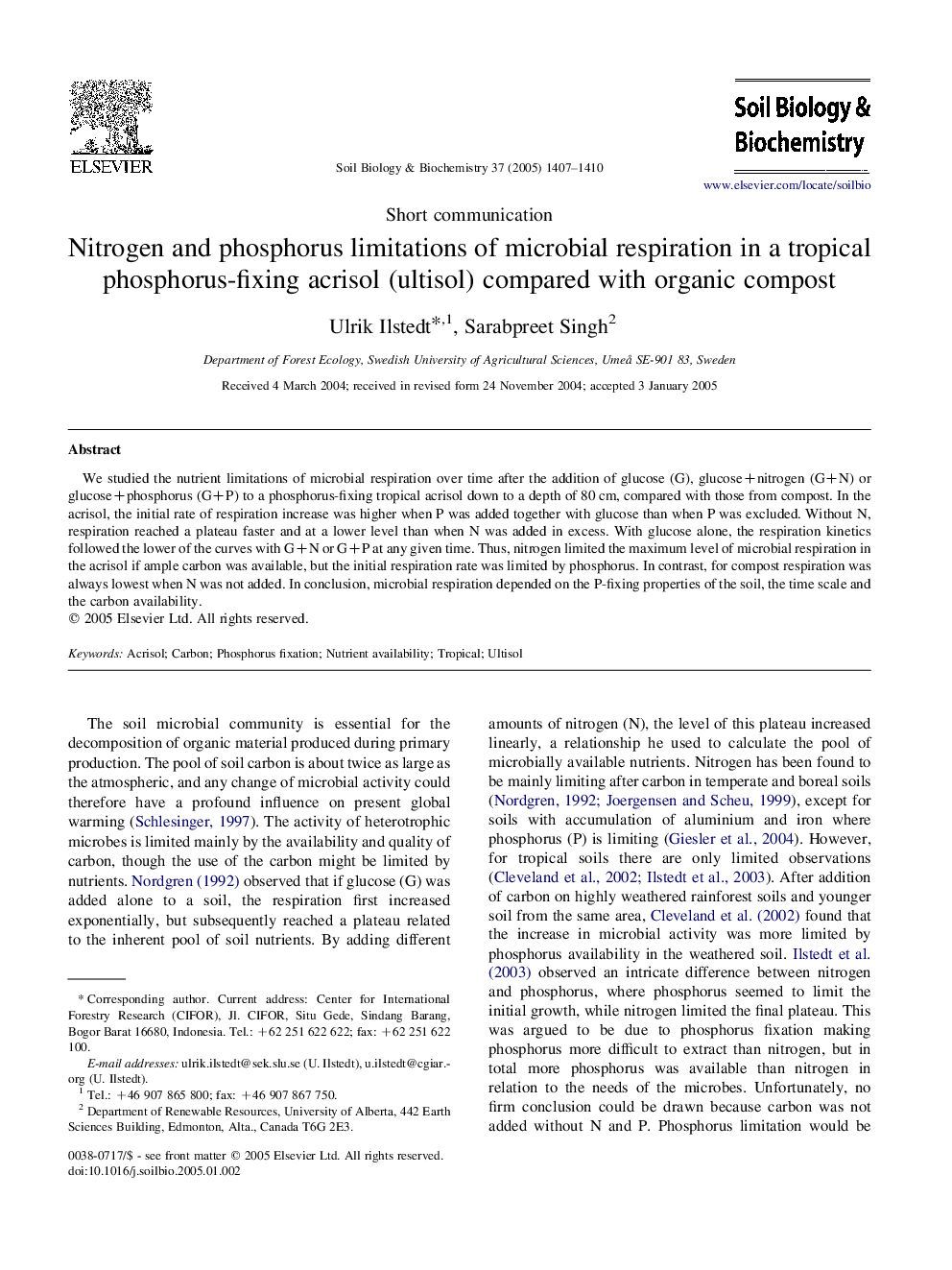| Article ID | Journal | Published Year | Pages | File Type |
|---|---|---|---|---|
| 10846161 | Soil Biology and Biochemistry | 2005 | 4 Pages |
Abstract
We studied the nutrient limitations of microbial respiration over time after the addition of glucose (G), glucose+nitrogen (G+N) or glucose+phosphorus (G+P) to a phosphorus-fixing tropical acrisol down to a depth of 80Â cm, compared with those from compost. In the acrisol, the initial rate of respiration increase was higher when P was added together with glucose than when P was excluded. Without N, respiration reached a plateau faster and at a lower level than when N was added in excess. With glucose alone, the respiration kinetics followed the lower of the curves with G+N or G+P at any given time. Thus, nitrogen limited the maximum level of microbial respiration in the acrisol if ample carbon was available, but the initial respiration rate was limited by phosphorus. In contrast, for compost respiration was always lowest when N was not added. In conclusion, microbial respiration depended on the P-fixing properties of the soil, the time scale and the carbon availability.
Related Topics
Life Sciences
Agricultural and Biological Sciences
Soil Science
Authors
Ulrik Ilstedt, Sarabpreet Singh,
